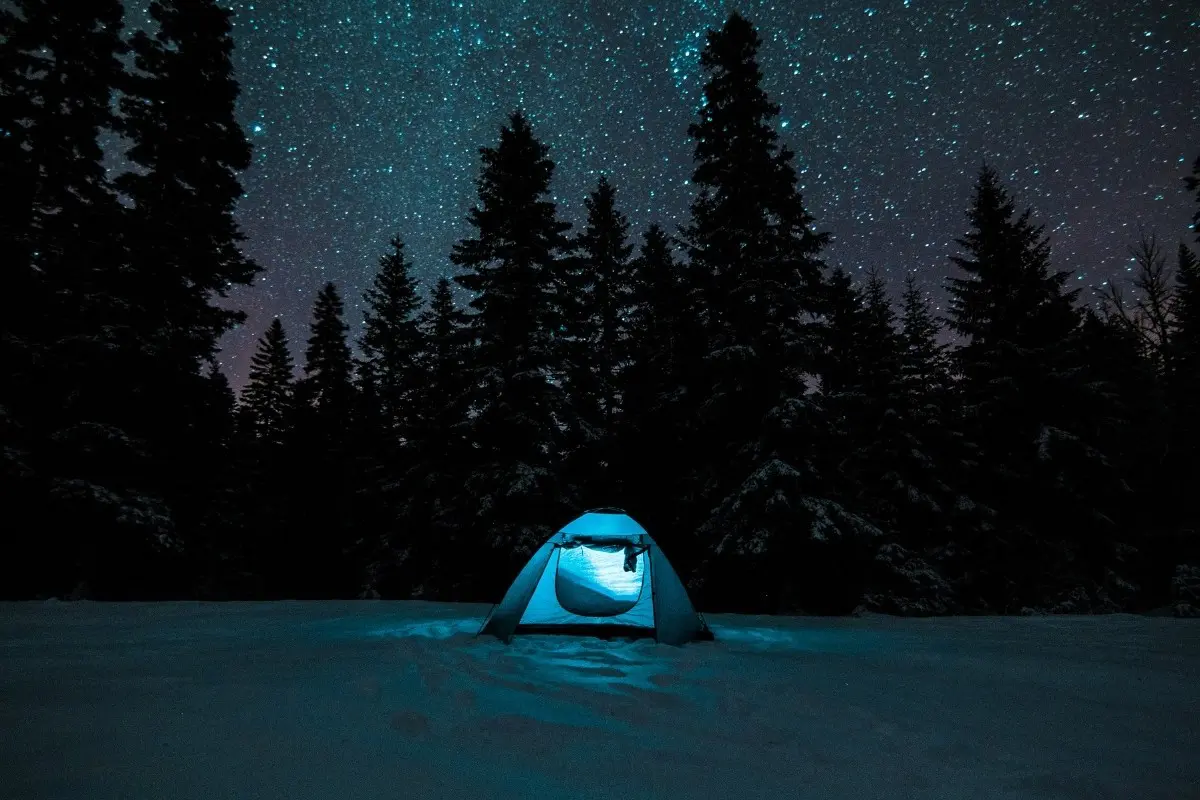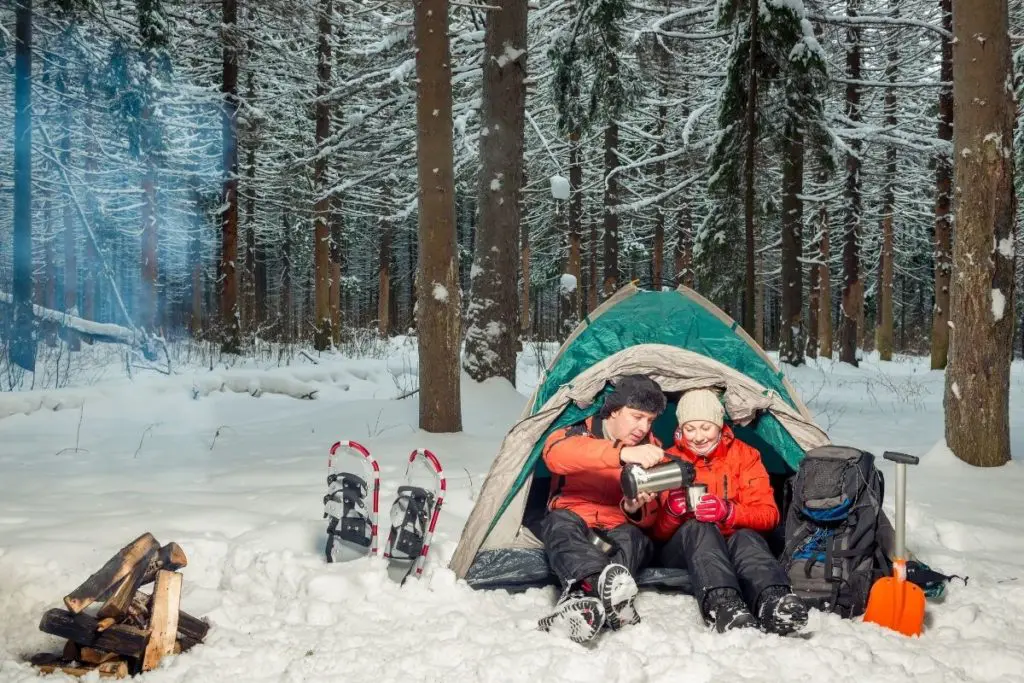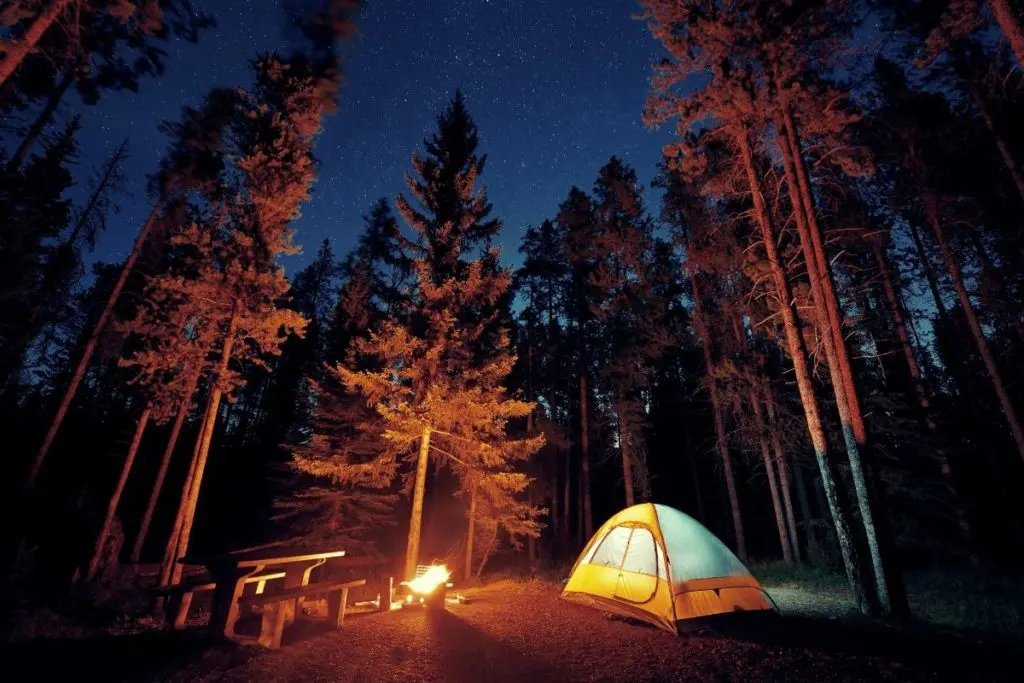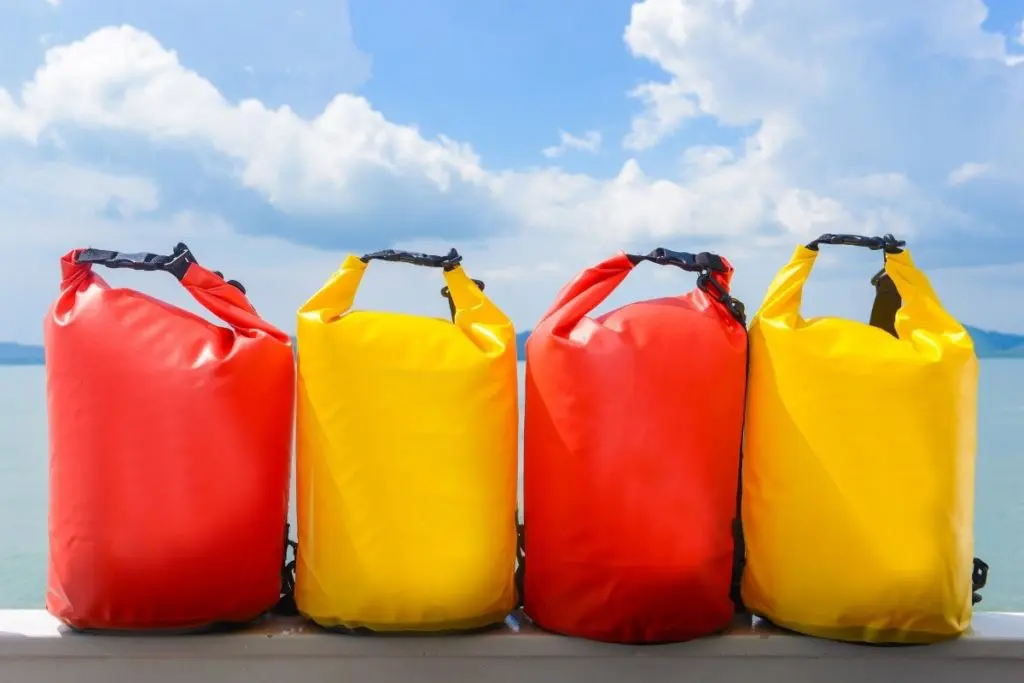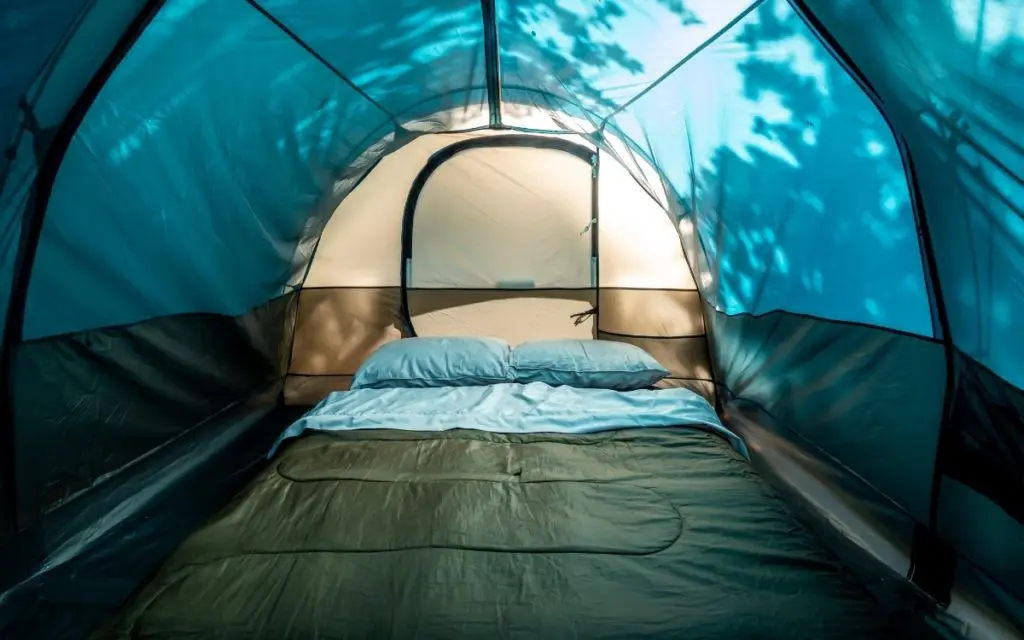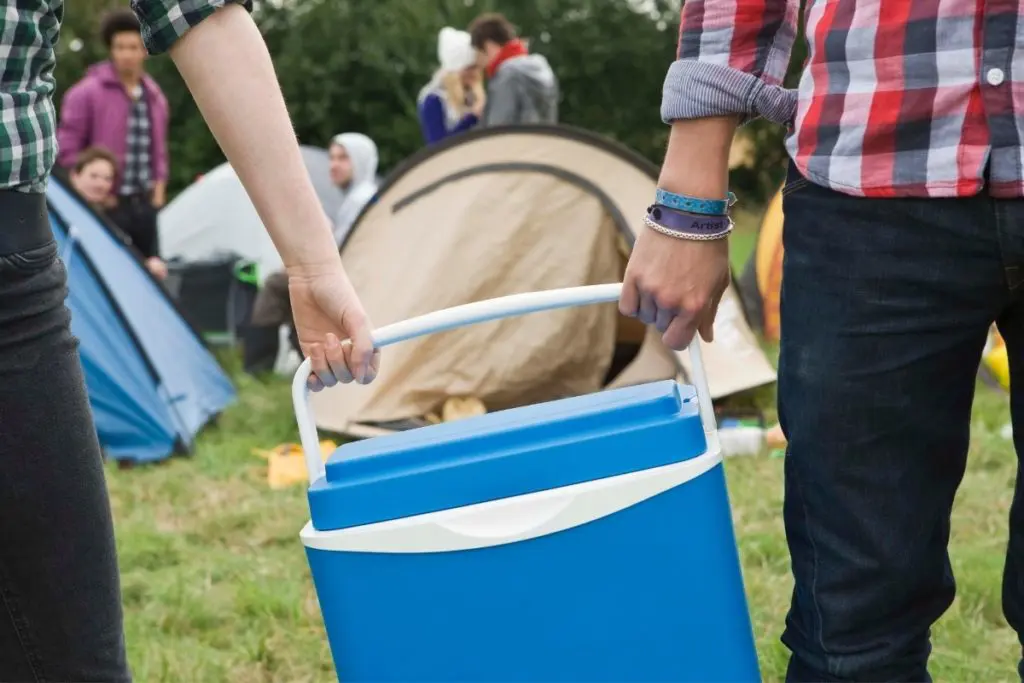Winter camping gear can be expensive. If you’ve already got a tent you use in warm weather, it seems silly to buy an entire new winter camping tent for just the one season. Luckily, it’s pretty easy to insulate your regular tent to keep things warm and cozy in the cold — even if it’s snowing! We are here to teach you how to insulate a tent for winter camping and cold nights.
Insulating and Heating a Tent in the Winter
There are a couple of different methods when it comes to keeping heat inside your tent. Let’s start with the basic addition of insulation to the tent itself.
1
Set Up Your Tent
To learn insulate a tent for winter camping properly, you’ll need it open and set up exactly how it will be when you’re in the wilderness using it. So whether you’re working in your garage, shed, or living room, the first thing you have to do is set up your tent!
2
Start With the Floor
Even with the sun warming the surface, the ground is always colder than the air above it. Dig just a few inches into the dirt with your fingers, and you’ll notice a significant temperature change! All that cold is just waiting to steal the heat from your tent during the night. Therefore, the most important part of insulating your tent is to lay down your insulation of choice over every square inch of the floor.
You can choose whether or not to affix this insulation to your tent permanently. Some people prefer to cut their insulation to the proper dimensions and pack it with them, so it doesn’t change how the tent breaks down and sets up. But if you aren’t concerned about that, you can use a staple gun, an adhesive spray, or even tape to secure the insulation in place.
3
On to the Walls
The walls of your tent are surrounded by air, which is a pretty good insulator on its own, but you’ll still want to put a barrier there. You’ll want to install your insulation on the outside rather than the inside for the walls and ceiling. Cover every square inch of your tent with your insulation of choice. Reflective insulations (think those blankets with the aluminum-like coating) are incredibly effective when used all around the outside of your tent.
Again, you can choose whether or not you’d like to permanently install this layer or if you want to be able to take it down after every trip. If you decide to attach it to the tent, be sure to cut the insulation so you can still open the tent door to get in and out. You might also want to cut the insulation so you can open any windows or vents. If you aren’t going to attach it to your tent, you can get away with something a little more rudimentary. Perhaps try wrapping the insulation around your tent (like a burrito).
4
Seal the Cracks
The seams of your tent are pretty vulnerable to drafts, so it’s a good idea to reinforce those. You can use adhesive spray to secure some foam insulation along the edges and seams, or you can sew in some old towels or blankets. You can even use old clothes, like that shirt from high school that doesn’t fit anymore.
Helpful Tips for Insulating Your Tent
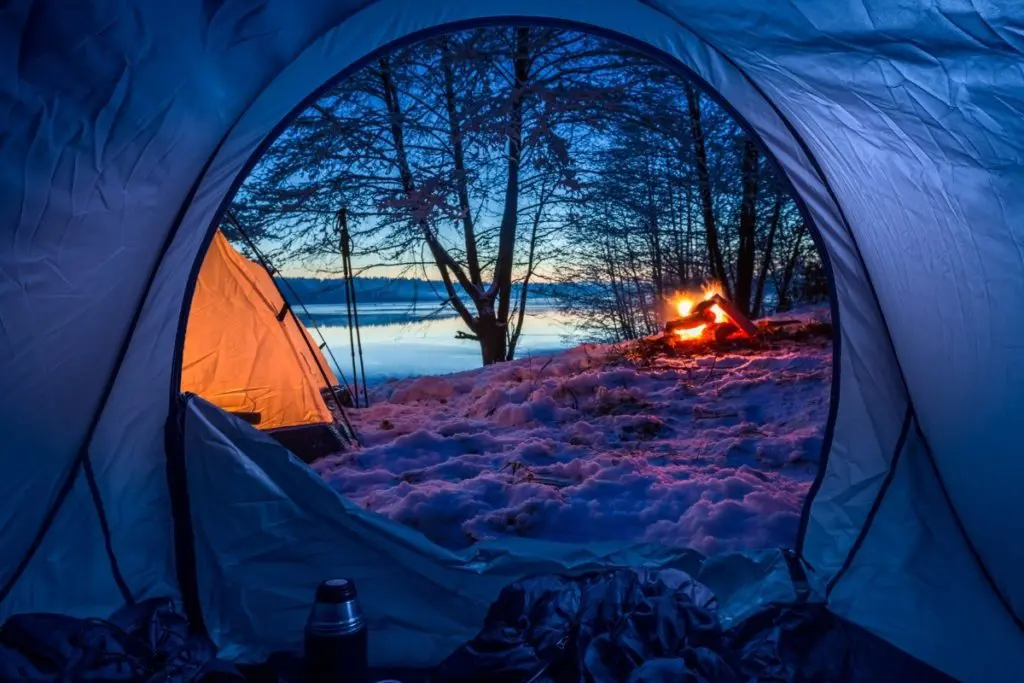
Properly insulating your tent to handle cold-weather conditions involves more than just reinforcing the tent walls and floor. Here are some other tips and tricks that will help with heating a tent in the winter:
1. Clear the Ground
If it’s snowing, be sure to clear away all white stuff from wherever you decide to pitch your tent. Snow trapped beneath you can melt due to heat pressure and later refreeze. This can literally freeze your tent and/or insulation to the ground. Depending on how cold it is and whether it’s going to get warm anytime soon, you might have to cut your tent free.
Even if it isn’t snowy, it’s still a good idea to clear away any debris before you set things up. Pebbles, twigs, grasses, leaves might seem like free insulation. However they can create bumps and uneven spots in your tent that are uncomfortable to lie on. These materials could even be dangerous if you’ve got an electric heater.
2. Cover the Ground
Now that you’ve cleared the ground… time to cover it! With insulation, that is. Even though you’ve insulated the floor of your tent, ideally, you’ll want an additional layer of insulation beneath your tent to protect it from direct contact with the ground. You don’t have to use fancy low-density foam for this — an old comforter or a few towels will do.
3. Wind Shield
Cold weather is generally associated with biting wind. To keep gusts of cold from beating against your tent and truly put your insulation to the test, consider using a windbreak. You can purchase windbreaks to set up around your tent. On the other hand — you can use natural windbreaks by pitching your tent against large rock formations, by a cluster of shrubs, and/or away from clearings.
4. Bigger Isn’t Better
When it comes to heat retention, the smaller the tent, the better. Larger tents have more cubic feet of air to keep warm. Our recommendation? Choose the smallest tent for the number of people on your trip.
5. Bundle Up
This might seem like common sense, but one of the best ways to stay warm through the night is to wear warm clothes. Long-johns, leggings, beanies, wool socks, and gloves can all help trap your body heat in your sleeping bag or under your blanket with you, keeping you warmer. Don’t overdo the clothing, though — believe it or not, overheating is still possible when it’s cold outside!
6. Bring a Heater
Whether it’s a unique winter camping tent heater, some single-use heat packs (like hand and foot warmers), and even a few water bottles filled with hot water (tea kettle over the fire, anyone?), any additional source of heat is appreciated. The more heat you start with, the longer you’ll stay warm. Activate your heat packs, fill up your water bottles, switch on your heater, and then spread them throughout your tent to warm the space evenly.
7. Keep It Dry
Another essential thing to remember when it comes to preserving heat is that you need to avoid moisture at all costs. Wet socks, waterlogged boots, or even those snowy leaves you tracked in accidentally can all drastically reduce the temperature inside your tent despite your insulative efforts. Be sure to dry everything out by the fire before you turn in.
8. Rain, Rain, Go Away
Besides on your person or belongings, water can also try and sneak its way in from the sky. Wet insulation is no insulation. Make sure your hard work isn’t all for nothing, consider investing in a rain shield. This can be as simple as a tarp you rig above your tent to keep off the water or as fancy as a pop-up gazebo.
9. Invest in Winter Gear
Winter camping tents can definitely be pricey, but there’s other winter gear you can get that won’t break the bank. Winter sleeping bags, winter sleeping mats, winter wool socks, and even winter camping tent heaters are all great investments that are less commitment than a whole winter tent. Furthermore, they are more versatile — you can use any of those things on a vacation to the mountains, or a trip to your in-laws upstate!
10. Build a Fire
Go the classic route and build a fire!
However, this tip won’t work for everyone. If you’ve got a winter tent with a stove jack or a tent with a smoke vent, then you might be able to set up a stove or even an actual fire pit to generate heat throughout the night.
How Does Insulation Work?
Understanding the principles behind insulation will help you when it comes time to learn how to insulate a tent for winter camping properly.
Insulation is a barrier between two materials that helps minimize heat transfer. In the case of insulating a tent, you want to create a barrier between your tent and everything outside it. This traps your body heat inside, which keeps you warm.
Your body heat might not seem like enough to keep you warm when it’s freezing outside. Still, the average human body actually produces about the same amount of heat as a 100-watt lightbulb. In the small, enclosed space of a tent, that adds up pretty quick!
What Makes Good Insulation?
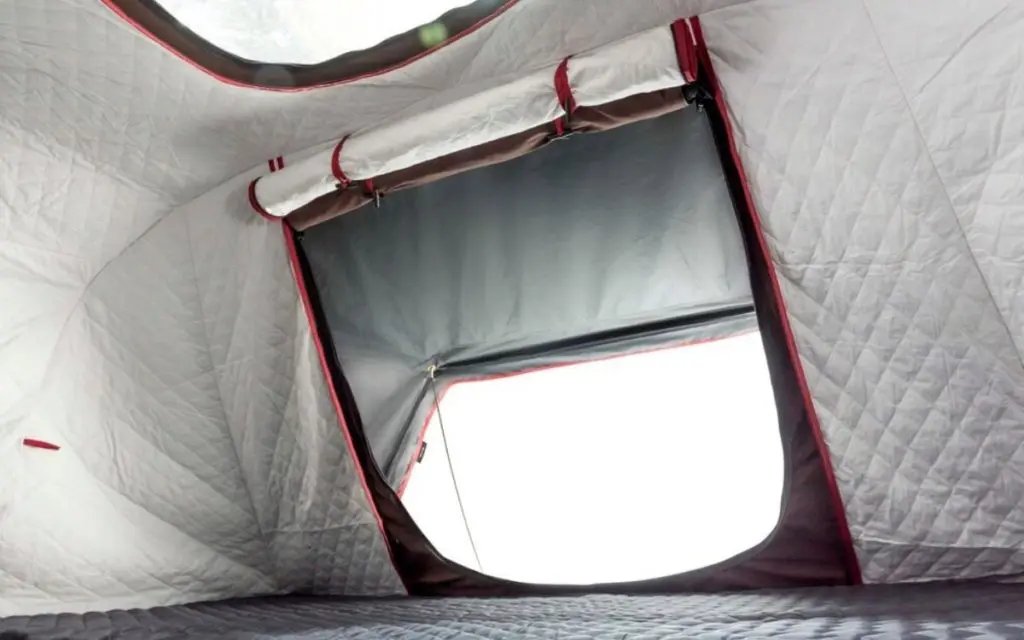
A common misconception is that insulation should be dense material — that creates a thicker barrier, right? But, when it comes to insulation, you want the opposite. It might seem counterintuitive, but the best insulation is, at the molecular level, very sparse. In fact, the most functional insulator is plain old empty air.
So how do you create a barrier of air? By using something that’s mostly air!
Materials that aren’t dense (especially on a molecular level) have lots of air trapped within them, making them better at reducing heat transfer. Most insulation you buy for insulating purposes is made from something like foam, fiberglass, polystyrene, or polyurethane. Foam insulation is a popular choice because it is often packed with human-safe gasses. They are even less dense than air, making them all the better at preventing heat transfer.
But What Can I Use?
If you’re serious about camping in the cold and want to learn how to insulate a tent for winter camping, you’ll probably want to invest in one of these fancy materials specifically designed to act as insulation. But if you’re just worried about the temperature getting a little nippy at night and don’t want your tent to get chilly, there’s lots of DIY insulation you can try:
- Textiles (spare blankets, old curtains, ripped-up carpet)
- Cork (another reason to have a glass of wine every day)
- All-Weather Products (sleeping bags, blankets, or anything with that shiny, aluminum-like coating on both sides)
- Batting/Stuffing/Polyfill (you can buy this new at most craft stores or harvest some from thrift-store pillows, comforters, and quilts)
If you’re already out in the wilderness and the temperature drops, you might be looking at a cold night and an immediate need to insulate. Thankfully, you can also use things like pine boughs, leaves, and tree bark. However, these are less effective and shouldn’t be relied upon in freezing conditions.
So there you have it — all the secrets behind converting your normal tent into a winter camping tent and all the tips to help keep in the heat all night long.
Further Reading
